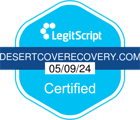When 28 Days Isn’t Long Enough; Extended Addiction Treatment Benefits
Drug and alcohol addiction can wreak havoc on a person’s life, sometimes for decades, and the societal cost is exponential: Conservative estimates place a $442 billion price tag on the economic impact of drug addiction. The number includes health care costs, criminal justice costs and loss of workforce hours.
Substance abuse can also negatively impact families and interpersonal relationships, and the cost of addiction in those cases is difficult to measure. The majority of addicts experience the onset of addiction before the age of 25, and the condition is typically a life-long struggle.
(Continued after video…)
The Numbers Around Addiction
What often begins as a way to unwind on the weekend can quickly turn sour. While concrete drug-related hospitalization numbers are hard to come by, data collected by the Substance Abuse and Mental Health Services Administration (SAMHSA) shows an upward trend of ER visits related to drug and alcohol use from 2009 – 2011[1].
The estimated number of drug-related emergency room visits across the U.S. in 2011 was 1.52 million, with another 1.2 million hospitalizations where illicit drug use was reported. And as early as 2009, the World Heath Organization placed drug addiction on their top 10 list of preventable diseases with the highest overall cost.
But within the sobering data lies a possible solution: Extended addiction treatment may improve an addict’s chances of staying sober for the long haul. Extended treatment means a period of time lasting at least 90 days, a far cry from the traditional 28- or 30-day model used by many treatment facilities.
Why Does Addiction Treatment Fail?
Substance abuse is more than a social problem; addiction is recognized as a medical condition, but it’s often treated using psychological methods alone. This single-faceted approach to treatment is the primary reason why so many people who abuse drugs or alcohol remain addicted or stuck in a relapse-recovery cycle.
One of the biggest fallacies regarding the treatment of drug and alcohol addiction is the idea that relapse equals failure. Relapses occur for a number of reasons, most of them highly personal, but they are not indicative of treatment failure.
According to the National Institute on Drug Abuse, 40 – 60 percent of drug addicts relapse following treatment. That number dwindles in extended treatment settings, however, as addicts are continuously monitored and given a variety of resources that serve as alternatives to their addict lifestyle.
Benefits of Extended Addiction Treatment
Time plays a crucial role in addiction recovery: Among addicts seeking treatment or order to do so by a court or other legal entity, only about 10 percent receive treatment in a timely fashion, as reported by the U.S. News & World Report in 2016.
In addition, a large percentage of addicts are only involved in an active treatment program for a short time – typically one month, a time-frame that almost lends itself to failure, according to health care professionals. Even a 90-day treatment program may not even be a sufficient amount of time for substance abuse recovery, experts say. In fact, individuals dealing with opioid addiction may require methadone maintenance for years.
Drug addicts and alcoholics are often standoffish and demonstrate a lack of trust in regards to authority figures and clinicians, especially if addiction treatment is court ordered. Extended treatment, whether performed in an inpatient or outpatient setting, allows health care professionals an adequate period of time in which to develop a trusting, positive relationship with their patients.
How Successful is Extended Treatment?
Recovery rates among drug addicts and alcoholics are hard to measure, for several reasons. First, the definition of “rehab” is not standardized. To one addict, rehab could mean a self-administered, cold turkey method of detox. To another, the word is synonymous with a facility, such as an addiction center or hospital.
But no matter what rehab means to the individual addict, many experts agree that continual evaluation and follow-up treatment are the keys to overcoming substance abuse. Without active participation in a recovery or treatment program, it’s easy for an addict to fall back into old habits, especially during periods of stress or when experiencing a change in life.
In many cases, addicts fall into a cycle of treatment-relapse-legal problems that can seem impossible to overcome. But extended treatment at facilities such as Desert Cove Recovery has been shown to help a number of addicts and alcoholics escape the bondage of substance abuse. And when addicts break free from the crutch of addiction, they can begin to rebuild their lives, develop stronger interpersonal relationships and increase productivity both at work and within their household.
Source:
[1] https://www.samhsa.gov/data/emergency-department-data-dawn/reports



